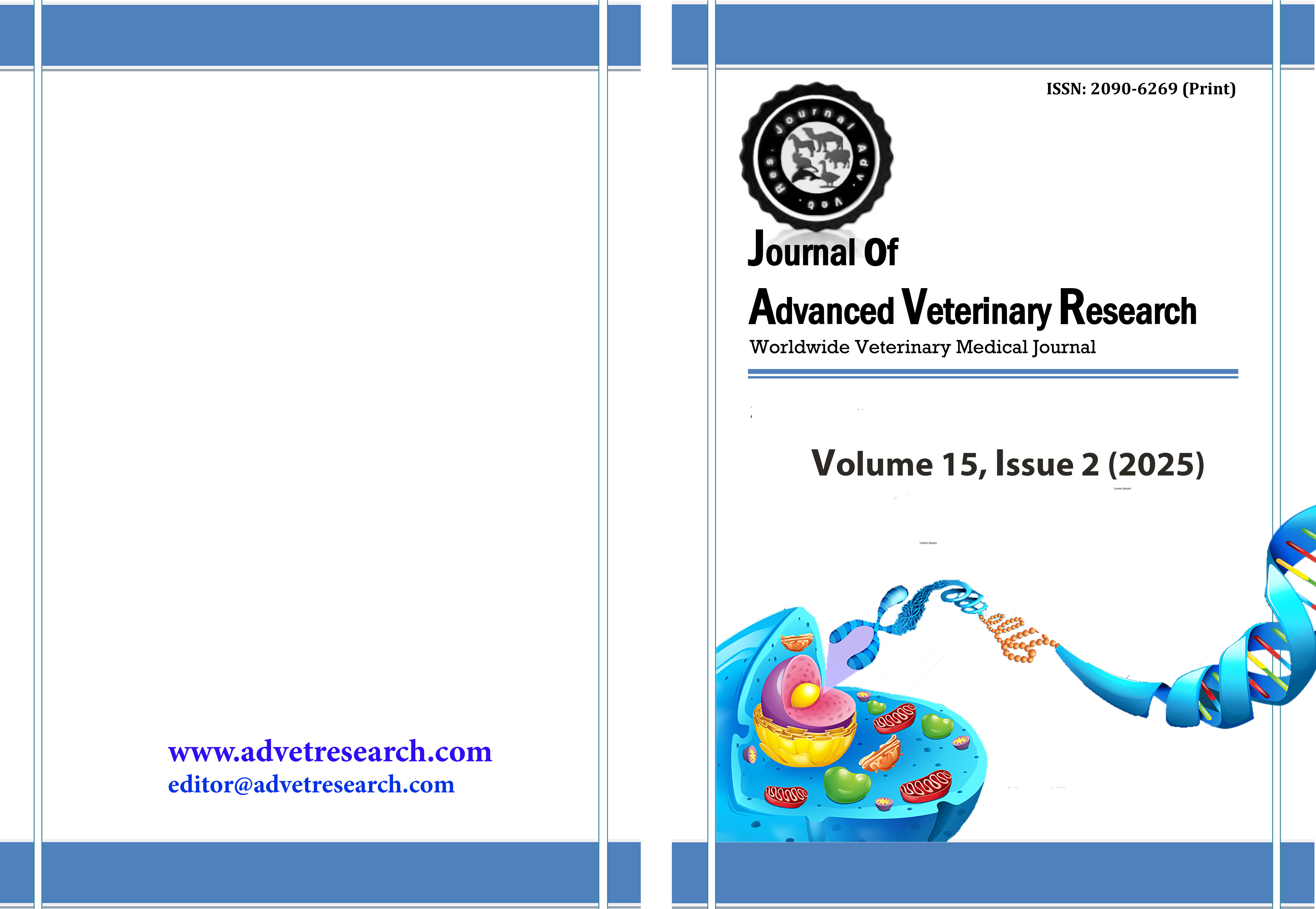Analysis of the hemagglutinin polypeptide of highly pathogenic avian influenza H5 clade 2.3.4.4b viruses isolated from backyard ducks and commercial chickens in Egypt
Keywords:
Antigenic sites, Backyard ducks, Dual receptors avidity, HPAI H5 clade 2.3.4.4bAbstract
Highly pathogenic avian influenza (HPAI) viruses of the H5 subtype garner global attention due to their severe impact on the poultry industry and the risk of human infections with high fatality rates. This study aimed to identify and characterize HPAI H5 viruses circulating in two major poultry production sectors: commercial farms and backyard flocks. Tracheal and cloacal swabs were collected from 75 flocks (57 farms and 18 backyard flocks) representing various domestic species and age groups, all exhibiting respiratory and/or nervous symptoms with high mortality rates. Real-time PCR results identified 24 positive samples for avian influenza virus (AIV) (24/75, 32%), which were further subtyped into 8 HPAI H5 (8/75, 10.66%) and 16 low pathogenic avian influenza (LPAI) H9 (16/75, 21.33%) cases. Among HPAI H5 infections, a higher detection rate was observed in backyard ducks (5/8, 62.5%) compared to chickens and turkeys on commercial farms. Three H5 viruses were isolated, and their hemagglutinin (HA) genes were sequenced using primers designed for this study. Sequence analysis revealed 96.5–97.1% and 97.8–98.6% identity with A/Common-coot/Egypt/CA285/2016 (the original H5N8 Egyptian virus), and 97.4–98.2% and 97.7–99% identity with A/Astrakhan/3212/2020 (the first H5N8 human isolate) at the nucleotide and amino acid levels, respectively. Several unique mutations were identified in the HA polypeptide of the duck isolates. Analysis of receptor binding sites (RBS) indicated a probable dual receptor-binding affinity in the H5 isolates studied. Phylogenetic analysis grouped the H5 isolates within clade 2.3.4.4b, showing close relatedness to Russian viruses. The mutational findings suggest the potential emergence of H5N8 escape mutants from backyard ducks.
Downloads
Published
How to Cite
Issue
Section
License
Copyright (c) 2025 Journal of Advanced Veterinary Research

This work is licensed under a Creative Commons Attribution-NonCommercial-NoDerivatives 4.0 International License.
Users have the right to read, download, copy, distribute, print, search, or link to the full texts of articles under the following conditions: Creative Commons Attribution-NonCommercial-NoDerivatives 4.0 International (CC BY-NC-ND 4.0).
Attribution-NonCommercial-NoDerivs
CC BY-NC-ND
This work is licensed under a Creative Commons Attribution-NonCommercial-NoDerivatives 4.0 International (CC BY-NC-ND 4.0) license




